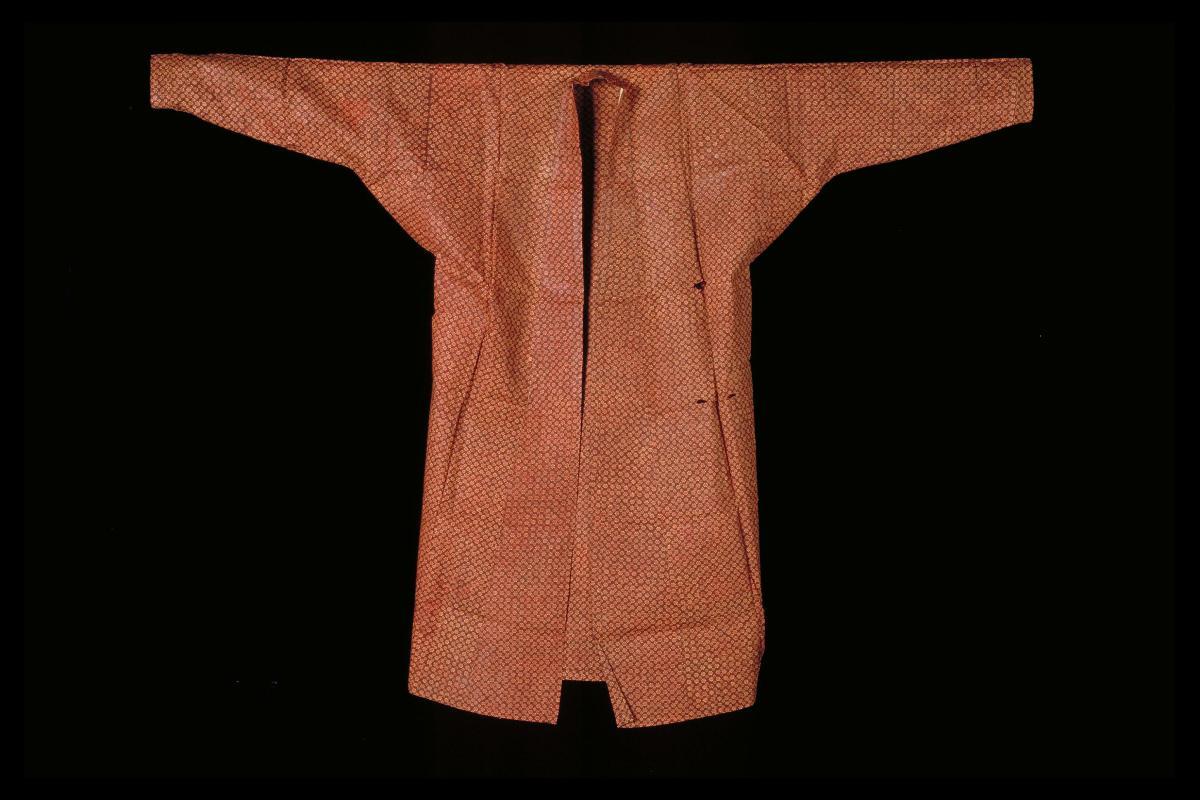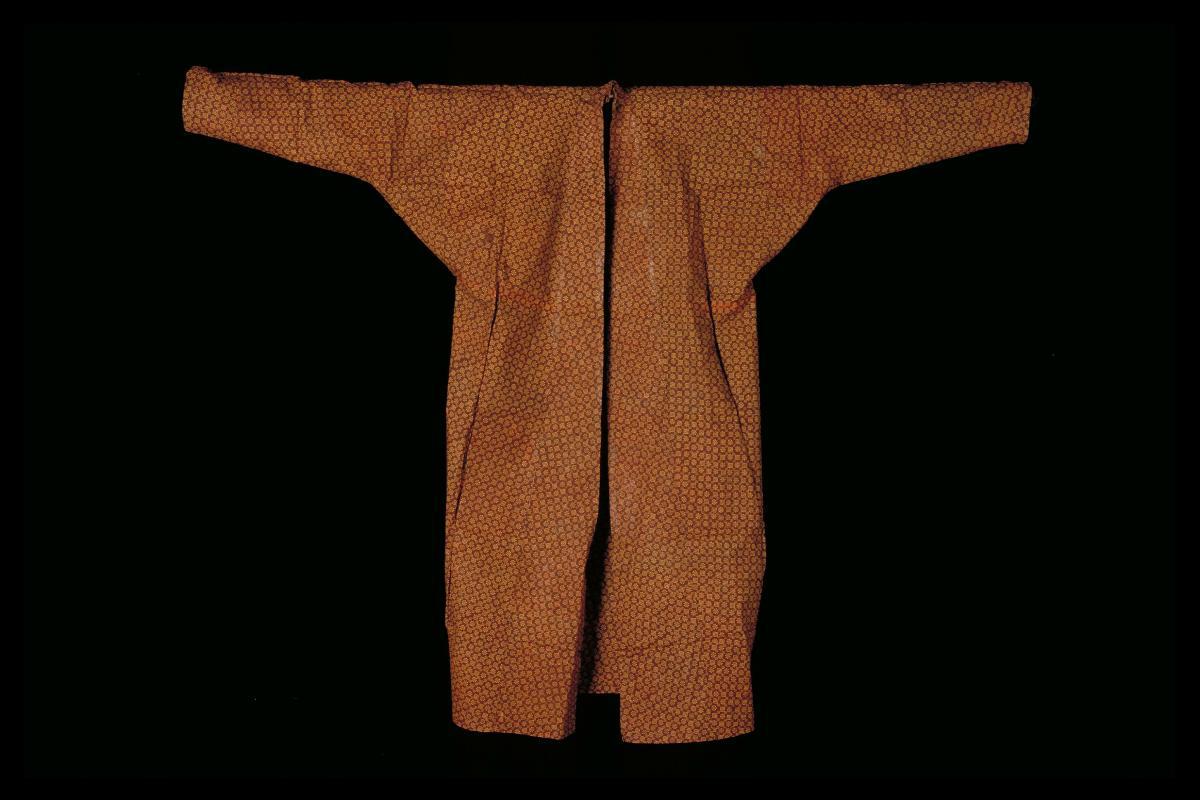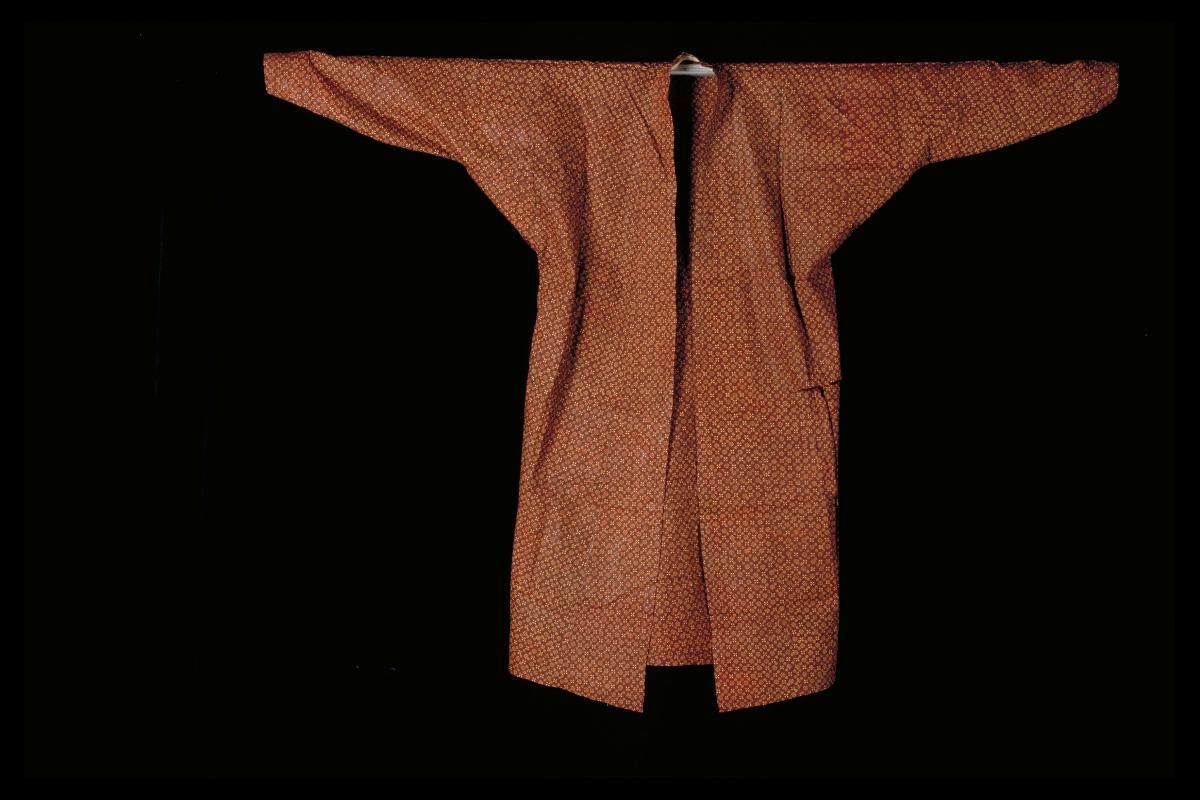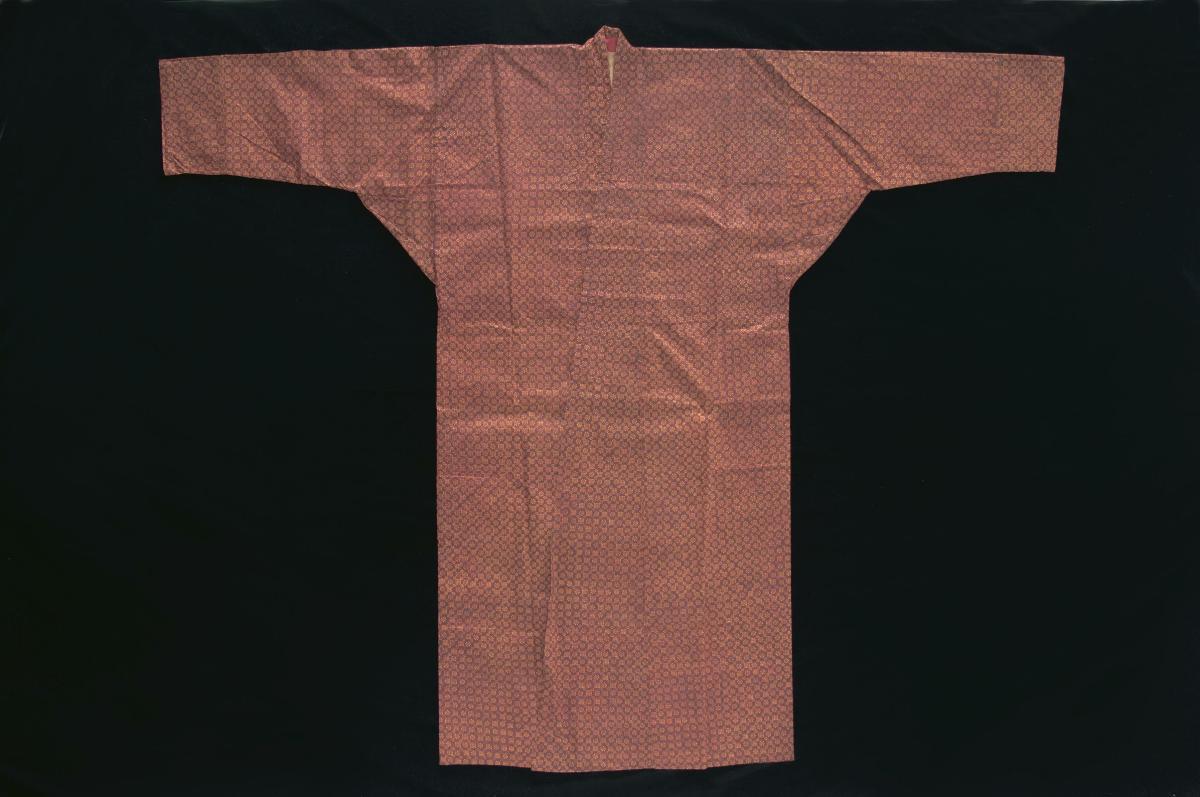The ‘baju panjang’ is a hip or knee length long tunic with a v-shaped opening for the head. This piece was made from kain chaylay with batik. Batik is a technique for decorating plain fabric using molten wax applied or drawn onto the cloth. The wax prevents the absorption of dyes to the areas on which it is applied. Through repeated applications of wax and dye, complex patterns and designs can be created on the fabric. The ‘baju panjang’, being long and loose fitting, is suitable for the hot, humid climate in Southeast Asia as it allowed for better ventilation. Early photographs from the mid 1850s reflect the garment, with its loose conservative form, and muted tones of natural dyes as the style of the day. In the early decades of the 20th century, these became more colourful with the introduction of synthetic dyes.















